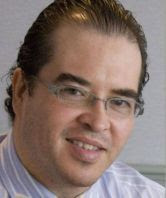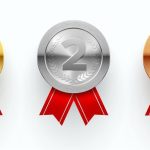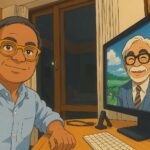
Gulf News Design Director
Miguel Gomez on
design doubts raised
by the members
Miguel is working on the tenth question
which will be an
EXCITING AND INFORMATIVE ONE…..
…………………………
Photo Editing
There is no technical training or focus is going in this part of the world on photo editing. Photo editing is just coming out of the experience. Can you tell me the secret of photo editing?
Gopakumar K, Doha
Miguel: In journalism text, pictures, infographics and illustrations have the same importance and is based on the story. Picture editing is about modifying the shape of an image to highlight certain content or composition, to add drama, movement and make the page more dynamic.
Some Do’s and Dont’s on the use of images are:
Don’t: Use of picture to fill a space on a page.
Do: Use it because it communicates better than the nothing else certain aspect of the story.
Don’t: Eliminate a good picture to make more space for text.
Do: Give the required space to both elements.
Don’t: Crop a picture to make more space on the page.
Do: Crop it to enhance its content and to emphasize the storyline.
Don’t: Cut-out a news image, this eliminates the context of the story.
Do: Cut-out images when you want to use them as an illustration (for an interview, products, objects, etc.).
Don’t: Leave a cut-out that is incomplete floating.
Do: Always cut-out complete objects and if this is not possible, have a line or place it at the edge of the space.
Don’t: Change constantly the cropping and size of mug-shots across your publication.
Do: Define a fixed size and use it consistently across the paper. (You can have more than one but use it for specific purposes).
Don’t: Use a picture across two pages if they are not a perfect spread.
Do: Always look for a perfect spread to place a picture across two pages, also take care that face did cut
Dont: Use a busy picture in a small box or a very simple picture big.
Do: Let the content of the image to dictate the size of the picture.
Same as other aspects of editorial design, photo editing needs practice and application of basic principles. After registration, you can access two self-inducted courses that I found really useful to learn the basics of photo editing. Ideally, you must review them and share it with your colleagues. Photo editing is a discipline that involves editorial, photography and design.
Language of the Image
When photographers and editors don’t articulate the journalistic value of an image, an important voice of the publication is muted or rendered ineffective. Photojournalists should use and encourage others to use, the visual language. This course will help you learn that visual language.
WHAT WILL I LEARN:
Upon completing this course, you will be able to:
▪ Use the visual vocabulary when discussing images
▪ Articulate the journalistic value of an image
▪ Make better storytelling images
Best of Photojournalism: What Makes a Winner.
By giving you a virtual seat at the judges’ table through interviews and video of the judges at work, you will learn what they look for in photojournalism.
A word of caution: Some of the photographs in this course contain graphic content.
WHAT WILL I LEARN:
Upon completing this course, you will be able to:
▪ Demonstrate an understanding of how to edit a photo story
▪ Identify the three main elements of award-winning photography
▪ Learn what judges look for in a winning portfolio
▪ Test your judging skills in the “You Be the Judge” activity
![]()







